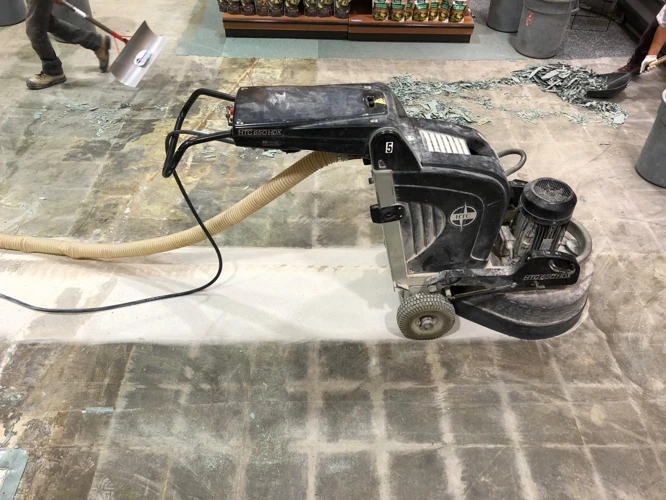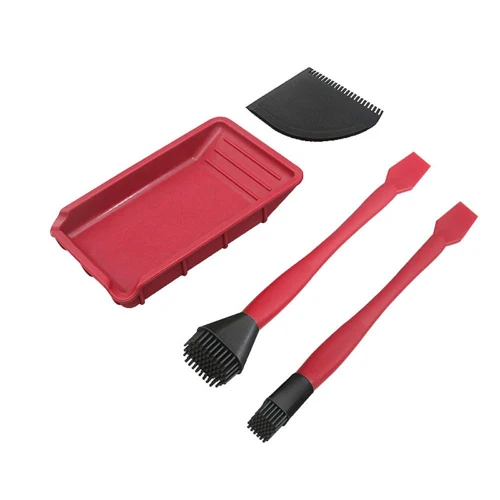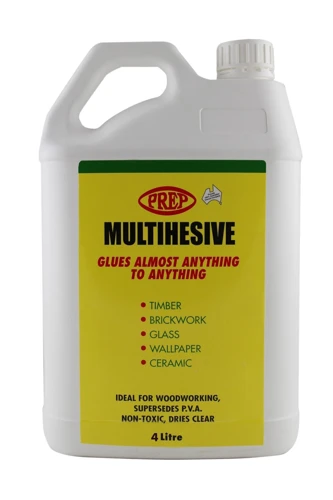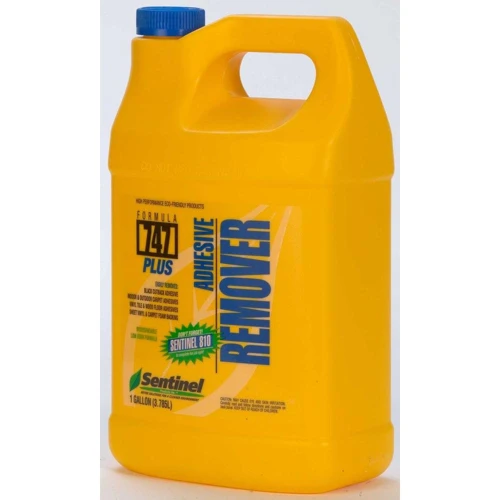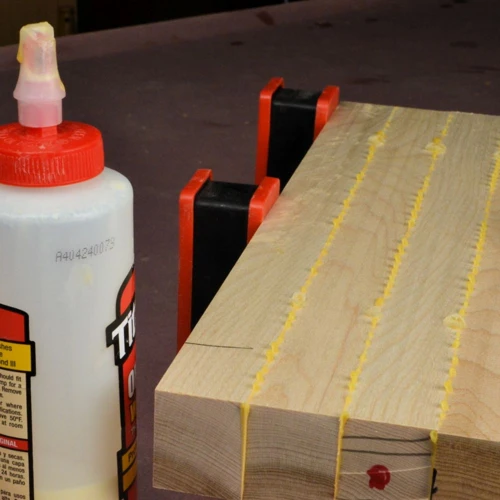As you prepare to update your flooring, you may discover that removing old VCT glue on your concrete floor is not as easy as it seems. While VCT glue is a common adhesive used to attach vinyl floor tiles, it can be frustratingly stubborn. Fortunately, with the right tools and techniques, the glue can be removed from concrete surfaces. Before beginning the process, it is important to have a clear understanding of why VCT glue is particularly difficult to remove from concrete and what you will need. This ultimate guide will provide you with step-by-step instructions and tips on how to safely and efficiently remove VCT glue from concrete surfaces.
Why VCT Glue is Stubborn on Concrete
Removing VCT glue from concrete can be a real challenge. This stubborn adhesive is designed to last a long time, which means it can be difficult to remove once it has been applied. Not only is the composition of VCT glue hard to deal with, but its bonding strength to concrete is also a significant factor in the removal process. Nevertheless, there are different ways to tackle this problem, and we will explore them in detail in the following sections. Whether you’re a seasoned professional or a DIY enthusiast, understanding why VCT glue is hard to remove is crucial to ensuring that you take the appropriate steps to get rid of it.
Composition of VCT Glue
VCT glue is a type of adhesive that is commonly used to install vinyl composition tile. It comes in different forms such as water-based, solvent-based, or pressure-sensitive. The composition of VCT glue varies, but generally, it contains synthetic polymers, resins, and solvents. Some brands may include additional components such as fillers, plasticizers, and stabilizers.
The table below shows the typical composition of VCT glue:
| Component | Percentage |
|---|---|
| Polymers | 30-60% |
| Resins | 10-35% |
| Solvents | 5-50% |
| Fillers | 0-20% |
| Plasticizers | 0-20% |
| Stabilizers | 0-5% |
As you can see, the amount of each component varies depending on the brand and type of VCT glue. The solvents in the glue are what make it difficult to remove from concrete surfaces. Even after the glue dries, the solvents can remain in the glue and create a strong bond with the concrete. This is why VCT glue is notoriously stubborn to remove from concrete surfaces.
If you’re also dealing with other types of glue, such as getting glue off the floor or how to remove wallpaper glue from unprimed drywall, be sure to check out articles from our website with useful tips and tricks, as well as information about the best products to use.
Bonding Strength of VCT Glue
Vinyl Composition Tile (VCT) glue is specifically made for bonding the VCT to a concrete surface. The bonding strength of VCT glue is influenced by various factors, such as the composition of the glue and the surface it is applied to, among others. In terms of composition, VCT glue is primarily made of vinyl acetate, ethylene, and acrylate copolymers, similar to other flooring adhesives. However, the bonding strength of VCT glue is specially designed to withstand the weight and traffic of foot traffic.
The bonding strength of VCT glue can be measured in terms of its shear strength and tensile strength. Shear strength refers to the maximum force required to shear the adhesive at a 90-degree angle to the surface, while tensile strength is the amount of force required to pull the adhesive away from the surface perpendicular to the bond line. VCT glue is designed to have a high shear strength and tensile strength, making it difficult to remove from concrete surfaces.
| Bonding Strength | Description |
|---|---|
| High Tensile Strength | The adhesive is tough to pull from the surface or can pull off chunks of the surrounding material. |
| High Shear Strength | The adhesive is challenging to slice from the surface or can pull off chunks of the surrounding material. |
| Highly Resilient | The adhesive has undergone testing to withstand foot traffic, physical impacts, and heavy loads. |
| Heat Resistant | The adhesive can resist high temperatures and prevents curling of the vinyl tiles. |
Removing VCT glue from concrete requires a significant amount of effort and the use of proper tools and materials. In the following sections, we’ll delve into the different methods of removing VCT glue and the tools required for the job in more detail.
If you ever find yourself needing to remove a different type of glue for whatever reason, you can check out our in-depth guides on what takes off glue, what CD is stuck like glue on, how to get glue stick off walls, how to get super glue off wooden floor, how to remove wallpaper glue from unprimed drywall, how to unclog glue gun, how to get glue off the floor, how to dissolve glue on metal, how to get hot glue off the wall, and how to remove 3m glue from car.
Tools and Materials Needed
When it comes to removing VCT glue from concrete, having the right tools and materials can make the job much easier and effective. Here are the things you will need:
Tools:
– Scraper or putty knife
– Heat gun or blowtorch
– Chemical solvent (if using)
– Sander or grinder with diamond attachment (if using)
Materials:
– Protective gear (gloves, eye protection, respiratory mask)
– Trash bags or containers for debris
– Chemical solvent (if using)
– Sandpaper or diamond abrasive pads (if using)
– Cleaning solution (mild soap and water or specialized concrete cleaner)
– Mop or sponge
– Towels or rags
Before starting the VCT glue removal process, make sure you have all the necessary tools and materials at hand. Also, it is essential to wear protective gear such as gloves, eye protection, and respiratory mask, especially if you are using chemical solvents or sanding the glue off. Proper protection will prevent any injury or harmful inhalation of fumes.
Having trash bags or containers for debris disposal can make cleaning up a breeze. You can also use a chemical solvent to remove the adhesive easily. Make sure to choose a solvent suitable for the type of glue you’re dealing with and follow the manufacturer’s instructions. A heat gun or blowtorch can be used to soften the glue for easier removal.
If you are planning to use a sander or grinder with a diamond attachment, make sure to have sandpaper or diamond abrasive pads of varying grits to get the job done. After removing the glue, ensure to clean up the work area using a cleaning solution and mop or sponge.
By having all the necessary tools and materials, you can make the VCT glue removal process much smoother and efficient.
Preparation
Before you dive into the process of removing VCT glue from concrete, it’s important to prepare adequately. This will ensure that the job is done safely and effectively. The following steps are critical to your preparation process: assessing the extent of the glue, cleaning the surrounding area, and gathering the necessary tools and materials. Let’s take a closer look at each of these steps to ensure that you’re fully prepared to tackle this task with confidence.
Assess the Extent of the Glue
Before you can start removing VCT glue from concrete, it is essential to assess the extent of the glue. This will help you determine the best approach to take in removing the glue. An assessment is also necessary to ensure that you have the right tools and materials to get started.
Here is a table of things to check when assessing the extent of the VCT glue on concrete:
| Extent of the Glue | Solution |
| Small patches of glue on the surface | Scraping off with a putty knife or sanding |
| Large areas of glue on the surface | Using heat or chemical solvents |
| Glue that has penetrated deep into the concrete | Scraping, heat, or sanding may not work. You may need to consult a professional for more advanced solutions |
By assessing the extent of the glue, you can avoid wasting time and resources using the wrong methods. You can also determine the level of effort required for the task ahead. For instance, VCT glue that has penetrated deep into the concrete can be tough to remove, and you may need to seek professional help. On the other hand, small patches of glue on the surface can be scraped off using a putty knife or sanded down.
Assessing the extent of the glue is an important step before starting the removal process. It will help you determine the right tool for the job and the methods that will be effective in getting rid of the glue.
Clean the Surrounding Area
Before starting the process of removing VCT glue from concrete, it is essential to clean the surrounding area thoroughly. You don’t want the debris and dirt to mix with the glue remnants and create an even tougher, more stubborn mess. To help you out, we’ve created a table with a list of tools and materials you will need for cleaning.
| Tools | Materials |
|---|---|
| Vacuum cleaner | Trash bags |
| Broom | Paper towels |
| Dustpan | Cleaning solution (vinegar-based or heavy-duty degreaser) |
| Bucket | Water |
Use the broom and dustpan to remove any loose debris from the surrounding area. Next, use the vacuum cleaner to clean the area thoroughly. Empty the vacuum cleaner contents into the trash bag and discard it.
Afterward, mix the cleaning solution with water according to the instructions on the label. Dip a paper towel into the solution and clean the surrounding area. Make sure to remove any stains or debris that could mix with the glue remnants.
Note: Always wear protective gloves and goggles while cleaning and removing VCT glue. The chemicals used in some cleaning solutions are harmful and can be dangerous if they come in contact with your skin or eyes. Also, make sure the area is well-ventilated to avoid inhaling any fumes from the cleaning solution.
How to Remove VCT Glue from Concrete
Dealing with stubborn VCT glue on concrete surfaces can be quite a challenge, but fear not, there are effective ways to tackle this issue. Removing VCT glue from concrete requires a set of tools and a thorough step-by-step guide to ensure that the job is done correctly and safely. In this section, we’ll dive into the methods that you can use to effectively remove VCT glue from concrete surfaces, so you can get on with your next project. Let’s get started!
Method 1: Scraping the Glue Off
Scraping off the VCT glue from concrete is one of the most common and straightforward methods, but it can be labor-intensive. Here are the steps:
- Step 1: Use a scraper to remove as much glue as possible. Start at one edge of the area with glue, and scrape back and forth in a sawing motion. Scrape off as much glue as possible, but be careful not to scratch the concrete surface.
- Step 2: If there is still glue remaining, moisten the area with water or a commercial adhesive remover. This will help loosen the glue.
- Step 3: Repeat scraping and moistening until you have removed as much glue as possible.
- Step 4: If there is still glue remaining, use a heavy-duty adhesive remover applied with a scrub brush or coarse pad. Follow the manufacturer’s instructions carefully and do not breathe in the fumes.
- Step 5: Rinse the area thoroughly with water to remove any remaining residue.
Scraping is a physical method that requires elbow grease and time, but it can be effective. However, this method may not be suitable for large areas or extremely stubborn glue. In those cases, chemical solvents or sanding may be required. It’s essential to wear protective clothing and goggles when using chemicals and to read the instructions carefully.
Method 2: Using Heat to Soften the Glue
One of the most effective ways to remove VCT glue from concrete is by using heat to soften the adhesive. This method involves using a heat gun, which is a handheld device that blows hot air, to melt the glue and make it pliable for removal. Here’s a step-by-step guide on how to use heat to soften VCT glue:
| Step | Instructions |
|---|---|
| 1 | Put on appropriate safety gear, such as gloves and eye protection, as the heat gun can cause burns and emit fumes. |
| 2 | Plug in the heat gun and turn it on to the lowest setting to avoid scorching the concrete. |
| 3 | Hold the heat gun a few inches away from the VCT glue and move it in a circular motion to gradually warm the glue and prevent the concrete surface from overheating. |
| 4 | As the glue warms up, use a scraper with a razor blade edge to lift and remove softened sections of the glue. |
| 5 | Continue heating and scraping small sections of the glue until it is all removed. |
| 6 | If any remnants of the glue remain on the surface, repeat the process until all of the glue is removed. |
It’s important to note that heat can be damaging to certain types of concrete, so it’s essential to use a low heat setting and avoid excessive heat exposure to prevent cracking or discoloration of the concrete. Be careful not to burn yourself or nearby objects with the heat gun.
Method 3: Chemical Solvents
Chemical solvents are effective in removing stubborn VCT glue from concrete surfaces. When using chemical solvents, it is important to wear protective clothing such as gloves and goggles to avoid skin and eye irritation. Here are the steps to follow when using chemical solvents:
- Step 1: Choose the right chemical solvent for the job. Some of the solvents that are effective in removing VCT glue include acetone, mineral spirits, and citrus-based solvents. Consult the manufacturer’s instructions on the label to ensure you choose the right solvent.
- Step 2: Apply the solvent. Pour the solvent onto the VCT glue and allow it to soak for a few minutes.
- Step 3: Scrape the glue off. Once the glue has softened, use a scraper to remove the VCT glue. Take care not to damage the concrete surface.
- Step 4: Repeat as necessary. Depending on the extent of the glue, you may need to repeat the process several times to remove all of the VCT glue.
- Step 5: Clean the surface. After removing all of the glue, clean the surface thoroughly with water and a neutral cleanser to remove any remaining residue.
It is important to note that chemical solvents can be harsh and can damage some surfaces. Always test the solvent on a small, inconspicuous area of the surface before proceeding with the full cleaning process. If the solvent damages the surface, do not use it. Additionally, make sure the room is well-ventilated when using chemical solvents to avoid inhaling toxic fumes.
Method 4: Sanding the Glue
When it comes to removing VCT glue from concrete, sanding is a very effective method. Here are the steps to follow:
- Step 1: Put on safety gear such as a dust mask and safety glasses. Sanding creates dust which can be harmful when inhaled.
- Step 2: Use a floor sander or a hand-held sander fitted with coarse-grit sandpaper. Coarse-grit sandpaper is very effective in removing the glue.
- Step 3: Start sanding the glue slowly and steadily. It’s important to maintain a consistent pace to ensure an even sanding of the glue.
- Step 4: Pay close attention to areas where the glue is still stubbornly adhering to the concrete. These areas will require more sanding than others.
- Step 5: Once the glue has been completely sanded away, use a vacuum cleaner to clean up any dust and debris. Ensure that all surfaces are clean before moving on to the next step.
Although sanding is a very effective method, it can be time-consuming and create dust. It’s important to take the necessary safety precautions when sanding. Additionally, sanding can also roughen the surface of the concrete, so it may be necessary to polish the surface to achieve a smooth and even finish. This method is a great option for removing stubborn VCT glue from concrete.
Cleaning Up
Once you have successfully removed the VCT glue from your concrete surface, the next crucial step is to tidy up the space. This process involves disposing of the glue and debris appropriately and cleaning the concrete surface. It is crucial to ensure that you leave your workspace spotless and well-organized. In this section, we will guide you through the necessary cleaning process to ensure that everything is orderly and tidy. So, grab your cleaning tools and let’s get started.
Dispose of the Glue and Debris Properly
Proper disposal of the glue and debris is an important step in the VCT glue removal process. Disposing of it properly ensures that it does not cause harm to the environment or to anyone who may come into contact with it. Here are some ways to dispose of VCT glue and debris properly in a safe and efficient manner:
| Method | Description |
|---|---|
| Garbage Collection | If the amount of VCT glue and debris is minimal, you may dispose of it in a sealed garbage bag. Place the bag in a larger container to prevent leaks and spills. |
| Hazardous Waste Disposal Facility | If the amount of VCT glue and debris is substantial or if it contains chemical solvents, it may need to be disposed of at a hazardous waste disposal facility. Check with your local government to find the nearest facility. |
| Recycling Center | If the debris includes VCT tiles, some recycling centers may accept them for recycling. Check with your local recycling center to see if they accept VCT tiles. |
It is important to note that VCT glue and debris should not be poured down the drain or simply thrown in the garbage. This could potentially harm the environment and cause health hazards. By following these proper disposal methods, you can help keep the environment safe and clean while completing your VCT glue removal project.
Clean the Concrete Surface
After removing the VCT glue from the concrete surface, it is crucial to clean the surface thoroughly. Any remaining debris or particles can hinder the application of new coatings or adhesives. Here are the steps to clean the concrete surface:
| Step | Process |
|---|---|
| Step 1 | Use a broom and dustpan to sweep off any large debris and dust from the surface. This will prevent them from being spread around with water. |
| Step 2 | Prepare a cleaning solution by mixing warm water and an appropriate concrete cleaner following the manufacturer’s instructions. Usually, 1 cup of cleaner is mixed with 1 gallon of water. |
| Step 3 | Pour the cleaning solution onto the surface and use a stiff-bristled brush or a push broom to scrub the surface. Pay attention to corners, edges, and other hard-to-reach areas where debris and particles can accumulate. |
| Step 4 | Rinse the surface with clean water using a garden hose or a pressure washer. Start from the farthest end and work your way until the entire surface is rinsed properly. |
| Step 5 | Let the surface dry completely before applying any new coatings or adhesives. |
Note: It is essential to wear protective gear such as gloves, safety goggles, and a respirator when dealing with chemicals and cleaning agents. Always follow the manufacturer’s instructions and safety guidelines. Also, it is recommended to test the cleaning solution in a small area before applying it to the entire surface. This will help determine any adverse effects or changes on the surface.
Maintenance and Preventive Measures
Maintaining a clean and clutter-free environment is essential in preventing any type of glue or adhesive build-up on concrete floors. Keeping the flooring in well-maintained condition can prevent the need for removal of VCT glue from the concrete. If the flooring is well-kept, chances are, the glue will not stick as strongly to the surface.
Regular Cleaning
To prevent the building up of VCT glue on concrete floors, regular cleaning is critical. Use a broom or vacuum to remove loose dirt and debris, and use a mop with a gentle cleaning solution to remove any remaining dirt. Keep in mind that some cleaning agents can damage the flooring; therefore, it is essential to research which cleaning solutions are safe to use before application.
Protective Measures
Applying a protective sealant on the concrete flooring surface can help prevent VCT glue from adhering to the surface if it is ever spilled. This type of sealant will act as a barrier between the surface of the concrete flooring and any spill or accident that might occur. Before applying the sealant, however, it is important to make sure the surface of the concrete is clean and free of debris.
Be Prepared for Accidents
Even with protective measures in place, accidents can happen. It is vital that you are prepared if an accident happens in your work area. Keep tools or cleaning equipment close by, ready to act in case of any accidental spills. By acting quickly, the VCT glue will not have time to dry, making it easier to clean up.
Professional Help
In some cases, VCT glue can be challenging to remove, especially if it has been on the surface for too long. In these scenarios, it may be best to hire a professional service provider to handle the removal process. These experts have the equipment, training, and experience needed to tackle even the most stubborn VCT glue remnants effectively.
By taking preventative measures, including regular cleaning and the use of sealants, and preparing for any accidents, you can keep your concrete floors free of VCT glue build-up. If the situation arises and the glue is too stubborn to remove, it is best to hire a professional service to ensure the best possible outcome. With these steps, you can maintain a cleaner and safer environment for years to come.
Conclusion
In conclusion, removing VCT glue from concrete can be a rigorous process but it is not an impossible task. It requires patience and determination to get the job done. While there are several methods of removing VCT glue from concrete, it is important to assess the extent of the glue, gather the necessary tools and materials, and also take safety precautions.
Scraping off the VCT glue with a scraper or putty knife is a traditional method that requires physical strength and extensive effort. However, when used with additional methods such as heat or chemical solvents, it can be more efficient.
Using heat to soften the glue can be effective, but care must be taken to avoid scorching the concrete surface. Chemical solvents such as acetone, mineral spirits or citrus-based cleaners can also be effective but can be hazardous. Sanding the glue off requires less physical strength than scraping but generates more dust.
After removing the glue, it is important to dispose of the debris responsibly and clean the concrete surface thoroughly. In addition, implementing preventive measures such as using mats or protective coverings on concrete surfaces can reduce the likelihood of glue residue buildup.
There are various factors to consider when removing VCT glue from concrete such as the age, composition, and thickness of the glue. It is advisable to consult a professional if the extent of the glue is extensive or if you are unsure of the best method to use.
In summary, the process of removing VCT glue from concrete can be time-consuming and require various techniques and tools. However, with the right approach, it is possible to remove VCT glue efficiently without causing damage to the concrete surface. Remember to work safely, take preventive measures, and clean up properly after removing the glue.
Frequently Asked Questions
1. How long does it take to remove VCT glue from concrete?
The time it takes to remove VCT glue from concrete depends on the size of the area and the method being used. It could take anywhere from a few hours to a few days.
2. Can I use a pressure washer to remove VCT glue from concrete?
Pressure washing is not effective for removing VCT glue from concrete. It is best to use one of the methods outlined in this article.
3. Do I need to wear protective gear when removing VCT glue from concrete?
Yes, it is recommended to wear protective gear such as gloves, goggles, and a face mask when removing VCT glue due to the chemicals involved.
4. Is sanding the best method for removing VCT glue from concrete?
Sanding can be effective for removing VCT glue if the glue is thin, but it is not the best method for larger areas or thicker glue.
5. Can I reuse the tools used for removing VCT glue?
It is not recommended to reuse tools used for removing VCT glue as the glue can damage the tools and make them less effective for future projects.
6. Is it necessary to remove all VCT glue from concrete?
If you plan on laying new flooring on top of the concrete, it is necessary to remove all VCT glue to ensure proper adhesion.
7. Can household cleaners be used to remove VCT glue from concrete?
Household cleaners are not recommended for removing VCT glue as they are often not strong enough to break down the adhesive.
8. Can VCT glue be removed without damaging the concrete surface?
Yes, all of the methods outlined in this article are safe for removing VCT glue without damaging the concrete surface.
9. How can I prevent VCT glue from sticking to concrete?
Preventive measures include applying a sealant to the concrete prior to laying down the VCT tiles and using the correct type of adhesive for the specific type of tiles being used.
10. Is it possible to remove VCT glue without professional help?
Yes, with the right tools and materials, VCT glue can be removed from concrete without professional help. However, for larger areas or thicker glue, it may be helpful to seek professional assistance.
